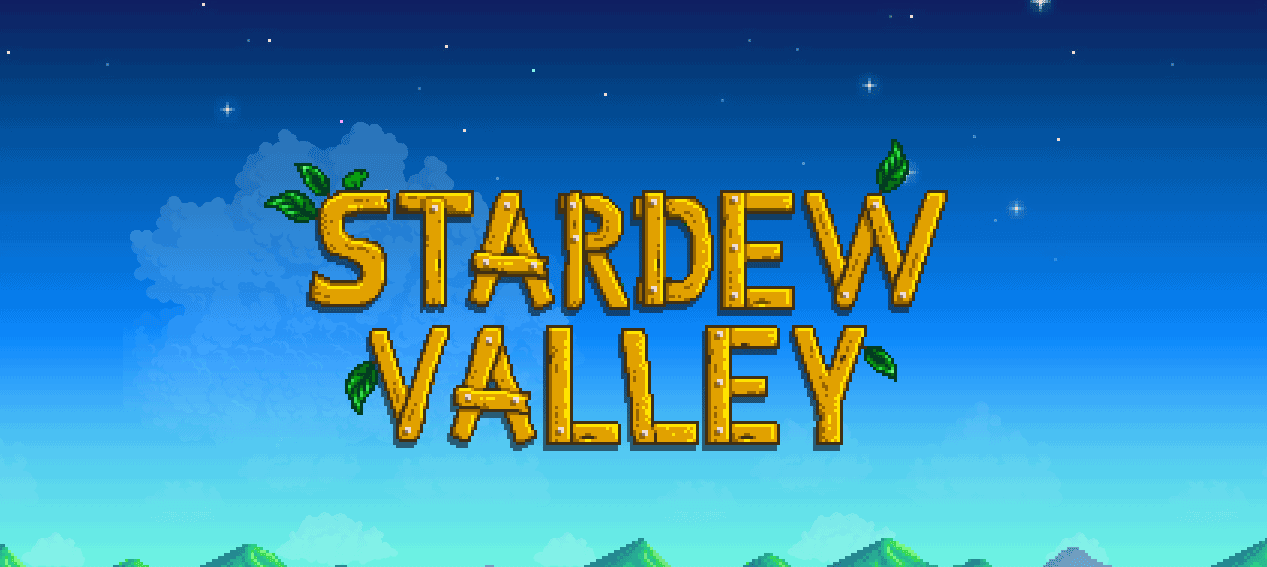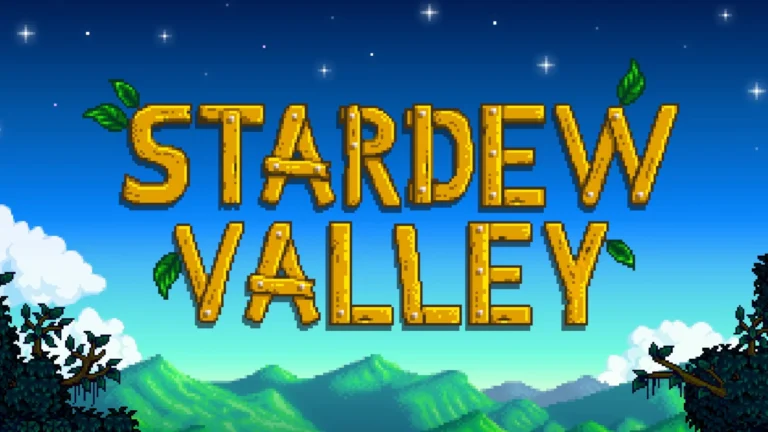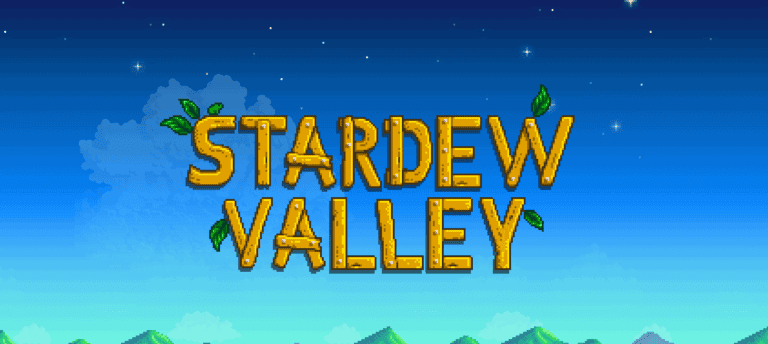
A Stardew Valley planner is a useful tool for both new and experienced players. It helps visualize your farm layout, optimize crop placement for maximum yield and plan out complex projects like barns and coops. Planning ahead can save you time and resources in-game. The planner is a valuable resource for players who want to create well-organized and aesthetically pleasing farms, optimize their gameplay, and avoid unnecessary trial and error within the game itself.
What Is A Stardew Valley Planner
A Stardew Valley Planner is a digital tool that allows you to design and visualize your farm layout in Stardew Valley before actually implementing it in the game. It helps with efficient space management, resource planning, and aesthetic design of your farm.
Key features and benefits:
- Visualize your farm: Experiment with different layouts for crops, buildings, paths, and decorations without wasting in-game time or resources.
- Optimize space: Strategically plan your farm to maximize efficiency and minimize travel time between different areas.
- Plan for seasons: Account for seasonal crop rotations and plan your farm accordingly to ensure year-round productivity.
- Share and collaborate: Some planners allow you to save and share your designs, fostering collaboration and inspiration within the community.
- Avoid mistakes: Test out different ideas and avoid costly in-game mistakes by planning ahead.
Popular Stardew Valley Planners:
- Stardew Planner V3: A widely used and feature-rich interactive planner with a user-friendly interface.
- Stardew Valley Planner v2: Another popular planner known for its ease of use and clear visuals.
- Stardew Designer: A cross-platform planner offering advanced features and customization options.
Popular Planners
Several popular Stardew Valley planners are available online, each offering unique features and functionality.
| Planner | Features | Pros | Cons |
|---|---|---|---|
| Stardew Planner V3 | Drag-and-drop interface, object counter, customizable farm types | Easy to use, visually appealing, accurate to game scale | Requires internet connection |
| Stardew Valley Farm Planner | Simple interface, focus on visual accuracy | Great for quick layouts, easy to share plans | Limited features |
| Stardew Valley Designer | Advanced features, cross-platform, open-source | Highly customizable, supports mods | Steeper learning curve |
Choosing the Right Planner
The best planner for you depends on your personal preferences and playstyle.
- Visual learners: Choose a planner with a user-friendly interface and accurate game visuals.
- Efficiency-focused players: Prioritize features like object counters and crop yield calculators.
- Creative builders: Opt for a planner with extensive customization options and mod support.
Tips for Using a Planner
- Experiment: Try out different layouts and crop combinations to find what works best for you.
- Start small: Don’t try to plan out your entire farm at once. Focus on one area at a time.
- Use references: Look at other players’ farm layouts for inspiration.
- Have fun: Remember, the planner is a tool to enhance your enjoyment of the game.
With the right planner and a little creativity, you can create the Stardew Valley farm of your dreams.
Getting Started with Stardew Valley Planner
Planning a farm in Stardew Valley can be pretty exciting, yet quite daunting for new players. To help streamline the process, the Stardew Valley Planner tool becomes an essential ally, allowing gamers to map out their dream farm with ease.
Understanding the Basics
Stardew Valley Planner is a robust tool designed to help players envision and create their ideal farm layouts, without the commitment of in-game resources. The planner offers a wide variety of options, such as placing buildings, paths, and vegetation, as well as manipulating terrain. Users can freely experiment with different farm configurations to find what works best for them.
The tool provides a visual representation of the standard farm map in Stardew Valley and includes all the official maps available in the game. With simple click-and-drag functionality, players can add or remove items from their farm layout. The planner is intuitive and doesn’t require previous experience, making it a perfect starting point for both new and seasoned farmers looking to design or redesign their in-game homestead.
Choosing the Right Farm Layout
When setting out to design your Stardew Valley farm, one of the first decisions is choosing the right farm layout from the official maps available. Each map offers distinct advantages and caters to different playstyles:
- Standard Farm: Ideal for beginners, with ample space for crops and animals.
- Riverland Farm: Suited for players who enjoy fishing, featuring multiple water bodies.
- Forest Farm: Offers foraging opportunities and unique wood resources.
- Hill-top Farm: Contains a mining area, presenting a blend of mining and farming.
- Wilderness Farm: Challenges players with monster encounters at night.
Begin by considering your preferred gameplay focus. Do you relish the idea of a bustling crop empire, or are you more inclined towards raising livestock? Maybe you’re eager to balance farm chores with frequent fishing trips, or perhaps your goal is to explore combat as you tend your fields. Each map has its own set of challenges and perks, and the planner allows you to tailor the terrain and options to complement your chosen strategy.
Through the use of Stardew Valley Planner, players can enjoy a smooth and creative planning process to establish a personalized and efficient farm tailored to their preferences and playstyle.
Strategic Crop Management
Effective crop management in Stardew Valley requires thoughtful planning and decision-making to optimize yields and profits. Players must consider each season’s unique aspects, selecting the right crops and timing harvests to maximize financial gains.
Selecting Crops for Each Season
Spring: Players should focus on quick-growing crops like Parsnips, which can be harvested and replanted multiple times. Strawberries, available during the Egg Festival, are also lucrative despite their mid-season start.
Summer: Blueberries and Starfruit are top picks. Blueberries provide multiple harvests, while Starfruit, although expensive, yield high profits.
Fall: Cranberries offer multiple yields, and Pumpkins are a single-harvest crop with a high return, especially when grown as giant pumpkins.
| Season | Crop Choice | Harvest Frequency |
|---|---|---|
| Spring | Parsnips | Multiple |
| Spring | Strawberries | Single |
| Summer | Blueberries | Multiple |
| Summer | Starfruit | Single |
| Fall | Cranberries | Multiple |
| Fall | Pumpkins | Single |
When selecting crops, it’s important to consider the length of the growing season and the number of harvests possible. Some crops can regrow after a harvest, providing more yield from a single planting.
Maximizing Crop Profit
To turn a healthy profit, players need to balance crop costs with potential revenue. Focusing on crops that either have a high selling price or regrow quickly to allow multiple harvests is a smart tactic.
Investment: It might be tempting to plant the most expensive seeds, but it’s the profit margin that truly matters. High-yield crops often mean higher expenses upfront, but they can also lead to bigger payoffs at the market.
Harvest Planning: Timing harvests to coincide with high-demand periods boosts profit margins. Ensuring that the last harvest is completed before the season ends avoids waste and lost investments.
Maximizing profits involves careful selection and cultivation. By blending the right choice of crops with a keen eye on their growth and harvest cycles, players can significantly boost their farm’s productivity and profitability.
Farm Infrastructure
Effective management of farm infrastructure is crucial for maximizing productivity in Stardew Valley. Knowing where to place buildings and how to best use structures like greenhouses and Junimo huts ensures a thriving farm.
Building Placement and Construction
In Stardew Valley, careful planning of building placement can have a profound impact on the farm’s efficiency. Barns and sheds should be situated close to resources they use or store. For example, a shed used to store farming tools or artisan equipment is best placed near crops or animals. Positioning buildings in a way that allows quick access to them saves time—time that can be used for other important farm activities.
When constructing new buildings, remember to keep clear pathways. This improves navigation and can help you reach different farm areas more quickly. Always consider future expansions; allow extra space for new buildings to avoid costly relocations later on.
Using Greenhouses and Junimo Huts
Greenhouses offer year-round crop growth, unaffected by the seasons. Placing a greenhouse strategically can significantly boost a farm’s productivity. Plant high-value or out-of-season crops here to maximize profit.
Junimo huts bring a magical touch to your farm by housing Junimos who harvest crops around their huts. They cover a specific radius, so center these huts amid large crop fields for the best results. When using Junimo huts, ensure there’s a clear path for the Junimos, as obstacles can impede their ability to gather crops efficiently.
Farming Tools and Equipment
In Stardew Valley, having the right tools and equipment is crucial to manage your farm effectively. This section explores how to choose tools that boost efficiency and how sprinklers can automate your farming chores.
Choosing the Right Tools for Efficiency
The key to farming efficiently in Stardew Valley lies in selecting the proper equipment. Watering cans and hoes are basic necessities, but upgrading them increases their area of effect, saving both time and energy. Players should consider their daily tasks and upgrade tools that align with their strategies. For example, an upgraded hoe can till multiple squares at once, while a better watering can covers more crops with each pour.
Basic Tools:
- Hoe
- Watering Can
- Scythe
- Pickaxe
- Axe
Upgraded Tools:
- Copper
- Steel
- Gold
- Iridium
Hint: Plan your upgrades around the seasons; winter is an ideal time for tool upgrades since farming activities are minimized.
Automate Farming with Sprinklers
Sprinklers are a game-changer in Stardew Valley, enabling players to maintain their crops with minimal effort. Starting with the basic sprinkler, which waters the four adjacent tiles, to the more advanced Quality Sprinkler that waters eight tiles, and finally, the Iridium Sprinkler covering a 24-tile area, there’s a range to suit any farm’s needs.
- Sprinkler Types:
- Basic Sprinkler: Waters 4 adjacent tiles.
- Quality Sprinkler: Waters 8 surrounding tiles.
- Iridium Sprinkler: Waters 24 tiles in a 5×5 area, excluding the tile it’s on.
Choosing the right sprinkler layout is essential. Place them strategically to cover the maximum number of crops. Regular maintenance of your sprinklers will ensure that they run efficiently throughout each season. Remember, the more you automate, the more time you have for exploring, mining, and other activities.
Community and Resources
Stardew Valley’s community thrives on player interaction and the sharing of creative content. From forums to mods, resources abound for the enthusiastic farmer.
Joining Stardew Valley Forums and Groups
Forums and Facebook groups are gathering places where players discuss strategies, share farm designs, and showcase their progress. Joining these communities can be as simple as signing up with an email address. Once inside, members can download new content, find answers to their questions, and connect with fellow fans of Stardew Valley.
- Forums:
- Stardew Valley Official Forum
- Reddit Stardew Valley Community
- Groups:
- Stardew Valley Facebook Group
- Discord channels dedicated to specific aspects of gameplay
Exploring Mods and Custom Content
Mods and custom content are game changers, literally. They range from simple aesthetic tweaks to complete gameplay overhauls. To start using mods, gamers will need to:
- Download SMAPI – the modding API for Stardew Valley.
- Choose and download mods, often found on the Stardew Valley Nexus or through community recommendations.
- Follow instructions to install the mods and start the game with new features and custom content.
Discovering and installing mods can make a player’s farming experience uniquely their own, and with proper installation, the possibilities are vast.
Farming Operations Management
Effective management of farming operations in Stardew Valley hinges on establishing efficient workflows and maintaining a clutter-free environment. This section provides insights into optimizing farm work and dealing with common hindrances.
Efficient Farm Workflows and Paths
Setting up efficient workflows on the farm is key to maximizing productivity. Utilize the Stardew Planner to outline paths that connect vital areas of your farm. These paths should be clear and direct to save time and reduce wasted effort. It’s advisable to place frequently visited structures like coops, barns, and the shipping bin along these paths for quick access.
- Frequent Tasks: Positioning crops near water sources or sprinklers.
- Seasonal Planning: Take note of crop seasons to plan ahead.
Creating specific areas dedicated to planting, animal care, and resource storage will streamline your day-to-day work.
Dealing with Farm Debris and Obstacles
Initially, your farm will be littered with debris such as rocks, logs, and weeds. Regularly clearing obstacles ensures that more land is available for planting and building. Employing tools like scythes for weeds, pickaxes for stones, and axes for logs will enable you to clean efficiently. Remember, you can sell or recycle certain types of debris for extra profit or crafting materials.
- Organize Clean-Up: Tackle one type of debris at a time.
- Storage Placements: Place chests strategically to store or delete unwanted items.
With these strategies implemented, you’ll have a well-organized farm that operates smoothly, and you’ll be better equipped to face the challenges that Stardew Valley presents.
Planning and Visualization Tools
Planning a farm in Stardew Valley can be as intricate as designing a real garden. The tools available help to map out every inch of your virtual space, turning what’s in your head into a visible and workable design.
Using the Stardew Planner Application
The Stardew Planner app provides a comprehensive suite of features for players looking to bring their dream farm to life. With this application, users can place buildings, crops, and decorations on a virtual layout of their farm. It captures the essence of meticulous planning by allowing users to:
- Save their progress and make changes as needed without affecting their in-game progress.
- Render their planned farm layout into a clear image, which can help with strategic placement of farm elements.
- Utilize different views and layers to add depth to their planning.
The intuitive interface ensures players can navigate and use the planner effectively, regardless of their experience level.
Rendering Farm Maps and Designs
When players are satisfied with their configurations in the planner, they can generate an image of their farm. This visual rendering provides several benefits:
- It helps pinpoint how each piece fits into the farm puzzle, maximizing the use of space.
- It saves time for players by providing a reference point that can be viewed at any moment, instead of continually redesigning in-game.
- The rendered maps serve as a guide and can be shared with the community for feedback or inspiration.
This visualization component is a vital asset for players who are keen on efficiency and design aesthetics.
Frequently Asked Questions
This section addresses common questions about using a Stardew Valley farm planner to create and optimize farm layouts.
What are the differences between the farm types in Stardew Valley?
Each farm type in Stardew Valley offers a unique layout and set of benefits. For example, the Riverland Farm has plenty of water for fishing, while the Forest Farm provides foraging opportunities and renewable stumps for hardwood.
How can I plan my farm layout in Stardew Valley for maximum efficiency?
To plan for maximum efficiency, use Stardew Valley farm planners that allow you to layout your farm and visualize where crops, buildings, and paths should go. The planners typically offer tools to map out the farm, experiment with different setups, and even provide restriction information to optimize space.
Is there a way to move the greenhouse in Stardew Valley using a farm planner tool?
The placement of the greenhouse is fixed in the game; however, farm planner tools might provide a visual representation where you can “move” the greenhouse to see how your farm would look.
What are some effective farm layout examples for Stardew Valley?
Effective layouts often include dedicated areas for crops, animals, artisan goods production, and a recreational space. Some planners may offer templates or user-shared designs which can serve as a starting point for creating a functional layout.
Can the Stardew Valley Planner be used on mobile devices, and is there an app available?
Some Stardew Valley planners are web-based and can be used on mobile devices through a browser. Currently, there are no official apps for these planners, but mobile-friendly websites are available.
What considerations should be taken into account when planning crop layouts in Stardew Valley?
When planning crop layouts, consider crop value, growth time, and whether they regrow. Factor in the seasons and proximity to water sources if you’re not using sprinklers. Strategic placement can maximize crop production and minimize daily maintenance time.



